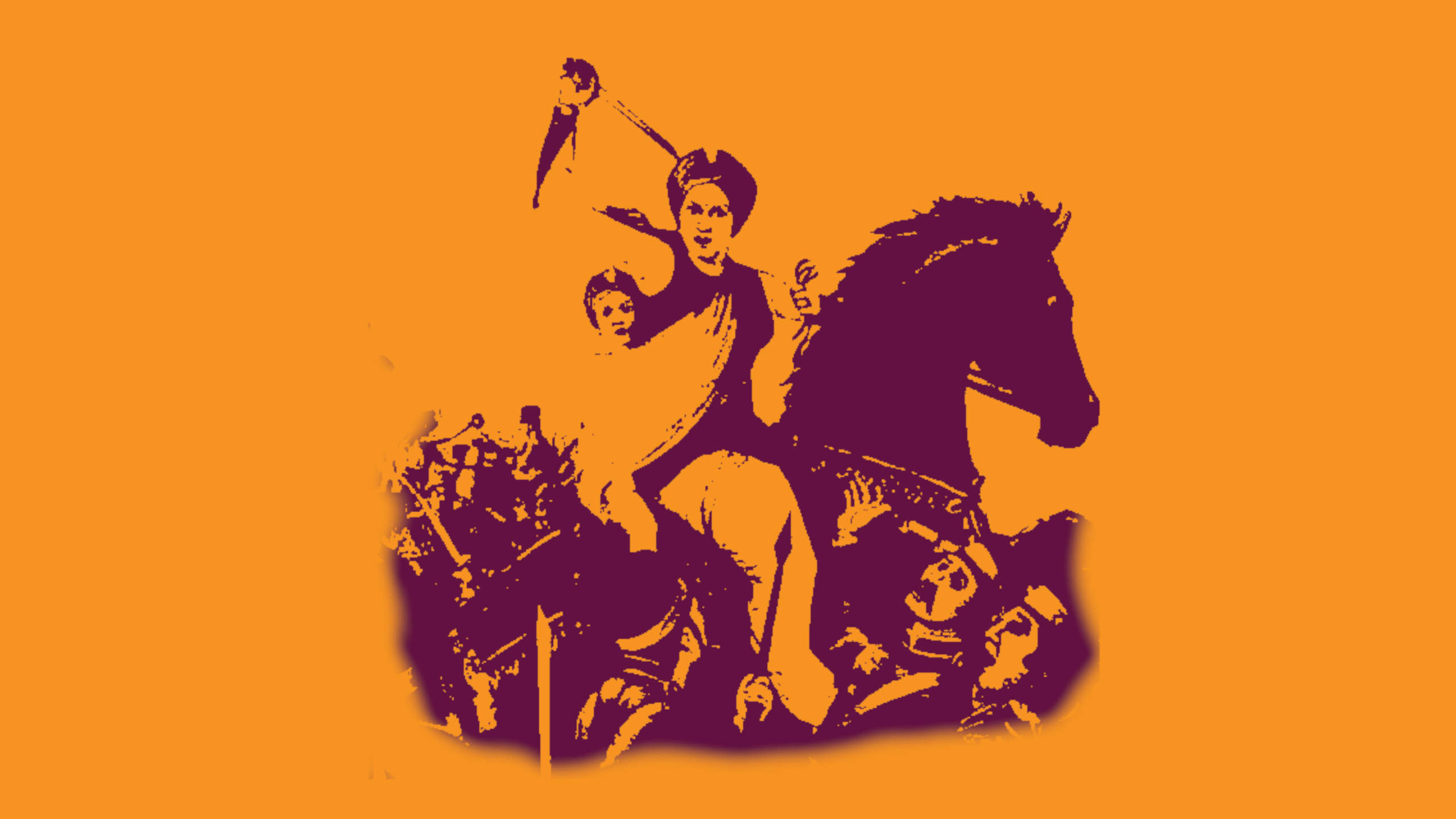The story of Rani Lakshmibai’s life is both unconventional and inspiring. The Rani born in a Brahmin family who was married to a king. She led a historic battle against the British with an army of both men and women.
By Sreejit Datta, Director of Civilisational Studies Practice & Resident Mentor at Rashtram.
बुंदेले हरबोलों के मुँह हमने सुनी कहानी थी
खूब लड़ी मर्दानी वह तो झाँसी वाली रानी थी
Translation: From the mouths of the Harbola-s of Bundela (traditional epic-singers of Bundelkhand), we have heard the tale of the Queen of Jhansi’s courage, relating how gallantly she fought like a man (against the British intruders) – such was the Queen of Jhansi!]
– Subhdra Kumari Chauhan
At a pivotal juncture in history where several princely states were bowing down to the oppressive might of the British Rule in India, the Rani of Jhansi, Lakshmi Bai, rose up fiercely to confront adharma head-on. Then the reigning queen of the Maratha kingdom Jhansi, Lakshmibai took command of the kingdom’s troops, raised an unorthodox army comprising both men and women, and strengthened the epoch-making pan-India revolt of 1857 with her valiant participation. Since then, more than a towering historical female-figure, this legendary warrior-queen has become a symbol of pride and lion-hearted courage, her deeds spawning many a compelling narratives and inspiring leaders across generations.
The story of Lakshmibai’s life is greatly unconventional from a social perspective. The Rani was not of royal ancestry. She was born in a Brahmin family, and her father was an adviser to the Peshwa Baji Rao II of Bithoor. As a girl, she was ‘Manikarnika’ – named after the centuries-old holy Ganga embankment of Kashi. The young Rani grew up among learned Brahmins and had access to the shastras. Her shastric education was rightly complemented with martial training involving horse-riding and archery. Neither of these kinds of training was common in the upbringing of a girl-child in ancient India.
After her marriage to the Raja of Jhansi, the lady Manikarnika was re-christened Rani Lakshmibai and after her husband’s untimely death, she became the queen regent. The death of the couple’s only child had pushed the future of Jhansi into uncertainty as the British administration was then executing a policy known as the Doctrine of Lapse. By this, princely states having no natural-born heirs would be annexed to the British colonial empire. To avoid such a prospect, the couple had adopted a son. However, the East India Company turned down the Rani’s pleas to grant her her kingdom, thus sparking off a several-years-long conflict. When offered a monthly pension in exchange of her kingdom, the Rani forcefully exclaimed – “Meri Jhansi nahi dungee” – an utterance to remain in the Indian consciousness forever. In the days to come, Jhansi caught the flames of rebellion against the imposition of the British Raj in India that spread from town to town, culminating in June 1857.
A massacre of British men, women, and children in the uprising over Lakshmibai’s claim to the throne is a memorable event from this period. Legend has it that the queen, being full of compassion, offered to protect the lives of the British women and children during this bloody event. As tensions escalated, a full-blown battle broke out between the queen and her foes, leading her out of Jhansi’s citadel. The thrilling tale of her escape on horseback with her infant son Damodar inspired countless legends, some believing it was her close aide Jhalkaribai disguising as the queen while the Regent made an escape on the sly.
After her ousting from Jhansi, Lakshmibai came to Gwalior where she raised her own army. In June 1858, her hideout was discovered by the British forces. In the battle that ensued, Lakshmibai led a fierce countercharge, making the ultimate sacrifice in the end. This was the last battle in the Indian Rebellion or the 1857 ‘mutiny’.
“The Indian Mutiny had produced but one man” reportedly said Sir Hugh Rose about Lakshmibai after the battle ended, “and that man was a woman”. This day, i.e. the 19th of November, the birth anniversary of Rani Lakshmibai, is celebrated as the “Martyrs’ Day” in the Indian state of Uttar Pradesh, where Jhansi is located.

